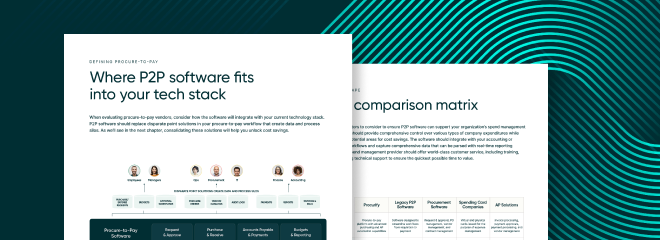Webinar: The Hidden Costs Behind a Jackson Pollock Painting
This interview is taken from an episode of the Spend Culture Stories podcast.
About the Podcast:
Your company culture might attract talent, but your Spend Culture will make or break your company.
Spend Culture Stories is a female-hosted and produced podcast that helps finance leaders learn the tactics, strategies, and processes to build a proactive Spend Culture.
Learn how to pick the right tools, implement the most efficient processes, and how to develop the right people to transform the Spend Culture of your organization for the better.
A Museum CFO Shares The Hidden Costs Behind a Jackson Pollock Painting
CFO/COO of the Museum of Contemporary Art. Mom. Certified Fraud Examiner.
Kate Motonaga, CPE, is the current COO/CFO of Los Angeles’ Museum of Contemporary Art. Prior to joining MoCA, Kate led finance teams in billion dollar companies in steel, mining, and CPG.
In this episode, Kate shares the secrets of the finances within the world of world-class museums, such as the hidden costs behind Jack Pollock paintings, and being a female CFO in a male-dominated function.
Speakers: Kate Motonaga, COO/CFO of the Museum of Contemporary Art
Listen to the Episode Now:
Notable Quotes:
As a female finance leader, what are some challenges you had to face and how did you overcome them?
“When I first started it was often I was the only female in the room and there were often times where as you can easily imagine: ‘Hey this is the kind of coffee I want.’ Where I would reply ‘Great – when you’re getting it, you can get me a cup too.’ So you know, there was a lot of that at the beginning of my career. But over time when you do see a lot of the guys go play golf, or if the guys go have a drink, you have to figure out how can you be part of that?
I learned how to participate without trying to be pushy or overwhelming in a way that actually makes them less inclined to work with you or talk to you or share with you. What I found was always really listening, making sure that I understood where each of those people were coming from. Everybody has something to teach you, so not only was I learning the business, but I was learning how they interact, and I’m really big on sharing success.”
What does the process for managing and tracking spend look like in a museum?
We as a non-profit use fund accounting. To explain fund accounting, I can give you an example. When you buy a house and you have to put on a downpayment, the bank holds that payment until you can actually make the purchase. One bank could have thousands and thousands of people that have given them their money.
But you don’t want the bank to take the money that you gave for your downpayment and use it for somebody else’s house. So it’s segmented – and that’s how funds are. A donor says I want to give you money to do education. I want to give you money to do public programming.You have to really make sure that how that’s used. And so we look at budgets that way. So there’s revenue for specific projects and then there’s revenue that’s general. And where we give we create budgets in line with what are the goals that we want to achieve? What do we think brings the excitement to our programs and not only do donors be excited but the people that we’re trying to engage with are excited about them and learning about the art and becoming a part of art as it evolves, because art itself is what is evolving all the time.
And so what we do is we work with all of them upfront and then we say ‘I trust you to spend within your budget and the best way for the museum’, because a budget is made at one point in time, but they’re living day to day and having to make decisions. Micromanaging is not going to bring out the best anybody and it’s certainly not going to bring out the best ideas and processes and procedures.
What are some of the hidden costs behind the art?
There are actually a lot of hidden costs around the art pieces as they come into the museum.
1. Transporting and Moving – First, there’s moving it. Shipping has to be really carefully done and it’s very expensive to do. So when somebody hands you a piece of art even as amazing as it is, we then have to figure out is ‘how do we ship it’?2. Storage – And then we have to store it. So we probably have three warehouses essentially at the end of the day of storage for our work.
3. Care & Upkeep – Lastly, you have to take care of it. So you have to have somebody come in and we call it conservation and they come in and they conserve the artwork. They clean it they prep it. They make sure that anything that happens to it is taken care of. We have an entire department just focused on taking care of the art. And none of those are in the donation.
If you’d like to nominate a speaker for the podcast, please fill out our guest nomination form here.
